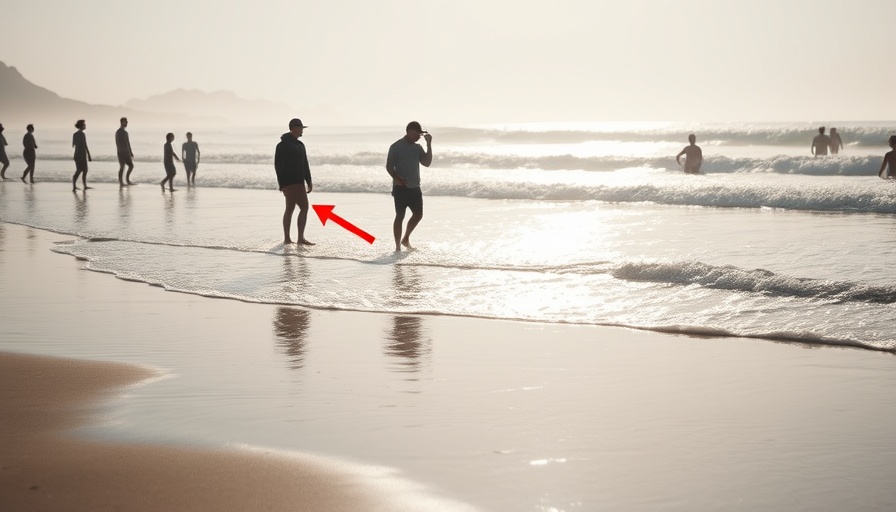
Shark Attack Incident Raises Awareness About Ocean Safety
Recently, a terrifying incident unfolded at Cabarita Beach in New South Wales, Australia, when a 16-year-old boy was attacked by a shark while surfing. The event, captured on film, showcases the boy's fellow surfers and beachgoers heroically rendering aid as he was carried to safety, potentially saving his life. The quick-thinking actions of those around him—applying a tourniquet to stem the bleeding—highlight the importance of readiness and response in emergencies. As the footage shows surfers fleeing the water with a six-foot shark closely pursuing them, this incident not only underscores the unpredictable nature of ocean encounters but also serves as a reminder of the need for safety measures and preparedness when engaging in water sports.
The Influence of Seasonal Factors on Shark Activity
According to Stephen Pearce, CEO of NSW Surf Lifesaving, the seasonal migration of whales has been linked to increased shark activity along the coast. This relationship emphasizes the importance of understanding the natural behavior of marine life when planning surfing or swimming outings. As more whales travel through the waters, the likelihood of sharks being drawn to the area in search of food also rises. This makes it crucial for surfers and beachgoers to stay informed about environmental conditions and to exercise caution when entering the ocean.
Shark Species and Their Behavior: What You Should Know
While the specific species of shark involved in this attack is still unclear, many observers suspect it could have been a great white. Understanding the behaviors of different shark species can equip surfers with valuable knowledge regarding how to potentially avoid dangerous encounters. Great whites, for instance, are known to be more active in coastal regions and often exhibit hunting behaviors that may lead to unfortunate situations. Gaining insights into shark behavior can be an essential part of ensuring safety and maximizing enjoyment during water sports.
Heroic Actions of Surfers: A Community Response
The video footage not only showcases a grim moment but also highlights the camaraderie and solidarity among surfers. The surfers who rushed to help the young boy exemplify the strong community spirit that thrives in water sports environments. Their bravery reflects how the surfing community comes together, often prioritizing the safety and well-being of fellow athletes.
How to Prepare for Safe Surfing This Season
In light of this recent event, it's an opportune moment to review some tips for safe surfing. Here are several strategies to help surfers enjoy their passion while minimizing risks:
- Know the Beach: Familiarize yourself with the surfing location and its history, as some beaches may have higher shark activity.
- Surf in Groups: Whenever possible, don’t surf alone. There’s safety in numbers, and having companions can prove invaluable in emergencies.
- Stay Informed: Check local reports or advisories on shark sightings or beach conditions before heading out.
- Observe the Ocean: Look for signs of marine life activity that may indicate the presence of sharks.
Awareness and education can significantly reduce risks while increasing the enjoyment of surfing experiences.
Final Thoughts: Building a Safer Surfing Community
Despite the risks associated with shark attacks, it’s crucial for water enthusiasts not to be overly discouraged. By taking safety precautions and promoting awareness among fellow surfers, we can create a culture that appreciates the ocean while respecting its potential dangers. The appeal of surfing remains strong, and with the right approach, both new and experienced surfers can navigate the waters with confidence.
The love for the ocean spans beyond any single experience. As we rally together in remembrance of the brave surfers who came to help during this attack, let’s continue to support one another in our shared passions, always with safety at the forefront of our minds.
 Add Row
Add Row  Add
Add 




Write A Comment